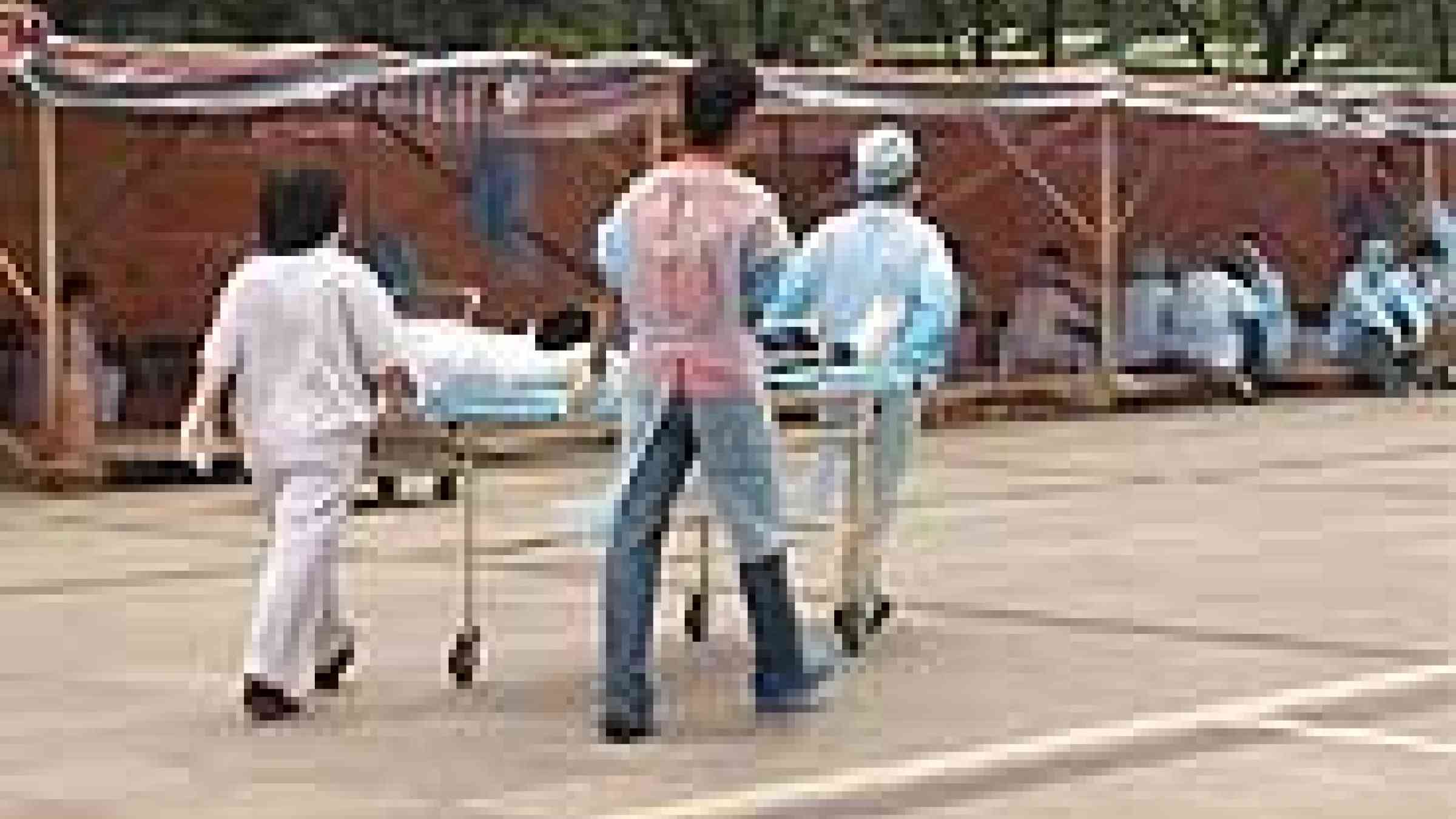Safe hospitals save lives during and after crises

Myanmar's Cyclone Nargis and China's magnitude 8.0 earthquake in May 2008 caused mass human casualties. They also devastated many health facilities, hampering post-crisis healthcare and raising questions on how best to reconstruct the health infrastructure.
Such tragedies reinforce the need to ensure all health facilities are designed and built to withstand disasters, protect patients and health workers, and keep providing life-saving services after emergencies.
"Hospitals are the most important buildings in a community," says engineer Tony Gibbs, an expert in increasing the resilience of health facilities and a member of the WHO team that travelled to China in June. "Their services are vital in the immediate aftermath of a severe natural event such as an earthquake, hurricane, cyclone or volcano eruption."
WHO advocates the concept of safe hospitals globally. The 2008-2009 World Disaster Reduction Campaign of Hospitals safe from disasters: reduce risk, protect health facilities, save lives is promoting the need to safeguard hospitals, rural health centres and other facilities from disasters. WHO is organizing the campaign jointly with the United Nations International Strategy for Disaster Reduction and the World Bank.
Hospitals, clinics and other infrastructure of health systems in many countries are vulnerable to disasters. Structures are poorly built despite repeated incidents of hospitals collapsing or having roofs torn off, injuring patients and medical staff, plus halting health services to survivors.
Steps can be taken to ensure health facilities withstand earthquakes or cyclones. Cost implications for building such disaster-proof structures are small if appropriate safety measures are considered during the design phase. "The most costly hospital is the one that fails," Mr Gibbs adds.
In cyclone-prone Bangladesh, clinics, shelters and other emergency facilities have been built on stilts or on higher ground to withstand sea surges, flooding and high wind. In Japan and Chile, where earthquakes have caused untold damage in the past, hospitals are now built using "base isolation" techniques to absorb the shocks caused by temblors.
Awareness in communities and governments for resilient health facilities is key. Then a detailed design process, including independent assessments of architectural and construction plans, is required to identify gaps. Building and seismic codes must be adhered to.
WHO provides guidance on hospital preparedness programmes, emergency response plans and mass casualty management systems, which are essential for health care facilities to manage internal and external risks, and to ensure that they continue to function after a disaster strikes.
Cyclone Nargis damaged or destroyed about half of health facilities in southern Myanmar. In some regions, almost all health facilities were lost, leaving thousands of survivors without immediate access to healthcare. WHO and its partners launched a joint action plan that calls for "strengthening and repairing systems” and developing disaster preparedness capacities.
A five-member WHO team, including Mr Gibbs, visited health facilities at the Chinese earthquake's epicentre in Sichuan province. Many hospitals were damaged and destroyed, forcing thousands of patients to be transferred to other areas. Numerous structures were beyond repair, but some were still standing due to being properly designed and built. The team advised Chinese authorities on whether to vacate damaged health facilities, strengthen or retrofit existing ones and to design and construct new healthcare structures.
"This was an opportunity for WHO to cooperate with China on key issues regarding the safe hospitals initiative," says Dr Eric Laroche, Assistant Director-General for WHO's Health Action in Crises. "I am positive about the Chinese commitment to rebuilding its health infrastructure with the safe hospitals concept in mind."